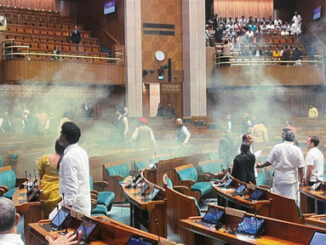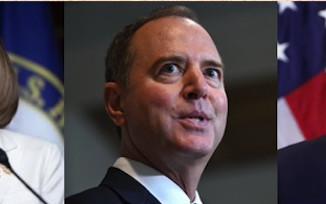
New York City, often heralded as the “center of the universe,” stands as a beacon of culture, finance, and global diplomacy. It is home to the United Nations headquarters, two major international airports, and some of the most iconic landmarks on the planet. The city is a bustling tourist hub, drawing millions of visitors every year who come to experience its vibrant atmosphere, rich history, and world-class institutions. Moreover, New York is the financial capital of the world, influencing markets and economies across the globe. Yet, despite all these accolades, the city’s roads tell a very different story—one that is marked by neglect, deterioration, and congestion.
The Dismal State of New York City’s Roads
The condition of New York City’s roads is nothing short of disgraceful for a city that prides itself on being a global leader. A 2022 report by the New York City Department of Transportation (NYC DOT) revealed that approximately 46% of the city’s roads were in poor condition. Potholes, cracks, and uneven surfaces are commonplace, making driving a challenge and posing significant safety risks to motorists, cyclists, and pedestrians alike. In fact, the city’s streets are so notoriously bad that they cost drivers an average of $620 annually in additional vehicle repairs, according to a report by TRIP, a national transportation research group.
In 2023, the city filled nearly 300,000 potholes—a staggering figure that highlights just how prevalent the problem is. However, these quick fixes are merely a band-aid solution to a much deeper problem. The underlying infrastructure of the roads is aging and in desperate need of comprehensive repair and modernization. The city’s reluctance or inability to address these issues in a meaningful way raises serious questions about the priorities and effectiveness of its administration.
The Economic Impact of Poor Road Conditions
New York City’s crumbling roads have far-reaching economic consequences. Tourism, a major driver of the city’s economy, is particularly affected. In 2019, the city welcomed a record 66.6 million visitors, contributing an estimated $70 billion to the local economy. However, the poor condition of the roads can tarnish the visitor experience, leading to negative perceptions and potentially deterring future tourism. Tourists navigating the city by bus, taxi, or rideshare are subjected to bumpy rides, delays caused by congestion, and an overall sense of disrepair that is not befitting of a world-class city.
Moreover, the financial burden on residents and businesses is significant. The extra costs incurred by drivers due to road damage not only strain individual finances but also have a ripple effect on the broader economy. Delivery trucks and commercial vehicles suffer frequent damage, leading to increased operational costs for businesses. This, in turn, can result in higher prices for goods and services, further burdening consumers.
Congestion and Urban Planning Failures
Beyond the poor condition of the roads themselves, New York City’s streets have become increasingly congested. This congestion is partly due to poor urban planning decisions, such as the introduction of dedicated bus lanes and the proliferation of street-side parking, both of which reduce the available road space for other vehicles. While bus lanes are intended to improve public transportation efficiency, they often exacerbate congestion on already narrow streets, leading to longer travel times for drivers and a higher likelihood of accidents.
The problem has been further compounded by the outdoor dining structures that have become a permanent fixture since the COVID-19 pandemic. During the pandemic, the city allowed restaurants to extend their dining areas into the streets as a temporary measure to help them stay afloat during lockdowns. However, many of these structures remain in place, taking up valuable road space and contributing to the city’s already overwhelming traffic congestion.
The impact of these combined factors is clear: New York City’s streets are not only in poor physical condition but are also increasingly difficult to navigate. This congestion has a direct impact on the city’s economy, as it leads to delays in the transportation of goods, increases the cost of commuting, and reduces overall productivity. In a city that prides itself on its efficiency and dynamism, this is an unacceptable state of affairs.
Comparisons to other Global Cities
When comparing New York City’s roads to those of other major global cities, the contrast is stark. Cities like Tokyo, London, and Paris, despite facing their own challenges, have managed to maintain much higher standards of road quality. Tokyo, for instance, boasts some of the best-maintained roads in the world, with a focus on regular maintenance and modernization. The city has implemented advanced road surface technologies that not only improve durability but also reduce noise pollution, demonstrating a forward-thinking approach to urban infrastructure.
Similarly, London has invested heavily in its road network, with a particular emphasis on reducing congestion and improving road safety. The city’s congestion charge, introduced in 2003, has been successful in reducing traffic volumes in the city center, leading to less wear and tear on the roads and a better overall driving experience. Paris, meanwhile, has focused on creating more pedestrian-friendly spaces and improving public transportation, which has also had a positive impact on road conditions.
In comparison, New York City’s roads are more reminiscent of those found in developing countries, where poor infrastructure is often a result of limited resources and political instability. For a city with the wealth, influence, and global standing of New York, this is a deeply embarrassing situation.
The Need for Urgent Action
The current state of New York City’s roads is not just an inconvenience; it is a reflection of a broader failure in governance and urban planning. The administration’s apparent indifference to the issue is perplexing, particularly given that city officials and employees must also navigate these same roads on a daily basis. The question that must be asked is: why has the administration turned a blind eye to this problem?
One possible explanation is the complex and often opaque nature of New York City’s budget and funding allocation processes. Road maintenance and infrastructure projects are expensive, and in a city with many competing priorities, it is possible that these issues have been deprioritized in favor of more immediate concerns. However, this short-term thinking is shortsighted, as the long-term consequences of neglecting the city’s roads will only become more severe—and more costly—over time.
The city must take urgent action to address this issue. This should include a comprehensive audit of the current state of the roads, followed by the development of a long-term plan for their repair and modernization. This plan should prioritize not just the repair of existing damage but also the implementation of measures to prevent future deterioration. This could include the use of more durable materials, improved drainage systems to prevent water damage, and regular maintenance schedules to catch issues before they become major problems.
A Call for Accountability
New York City has a reputation for upholding the best, and its current road conditions are simply unacceptable for a city of its stature. The administration must be held accountable for its failure to maintain the city’s infrastructure and must take immediate steps to rectify the situation. The residents, businesses, and millions of visitors who contribute to the city’s economy deserve better deal.
The city’s roads should be a point of pride, reflecting its status as a global leader. Instead, they are a source of frustration and embarrassment. It is time for the administration to open its eyes to this issue and take necessary steps to ensure that New York City’s roads are worthy of the city’s reputation. Anything less would be a disservice to the city and all who call it home. And, it certainly is a disgrace to City Administration.
(Readers’ comments are welcome. Please send comments to editor@theindianpanorama.news or post online)





Be the first to comment